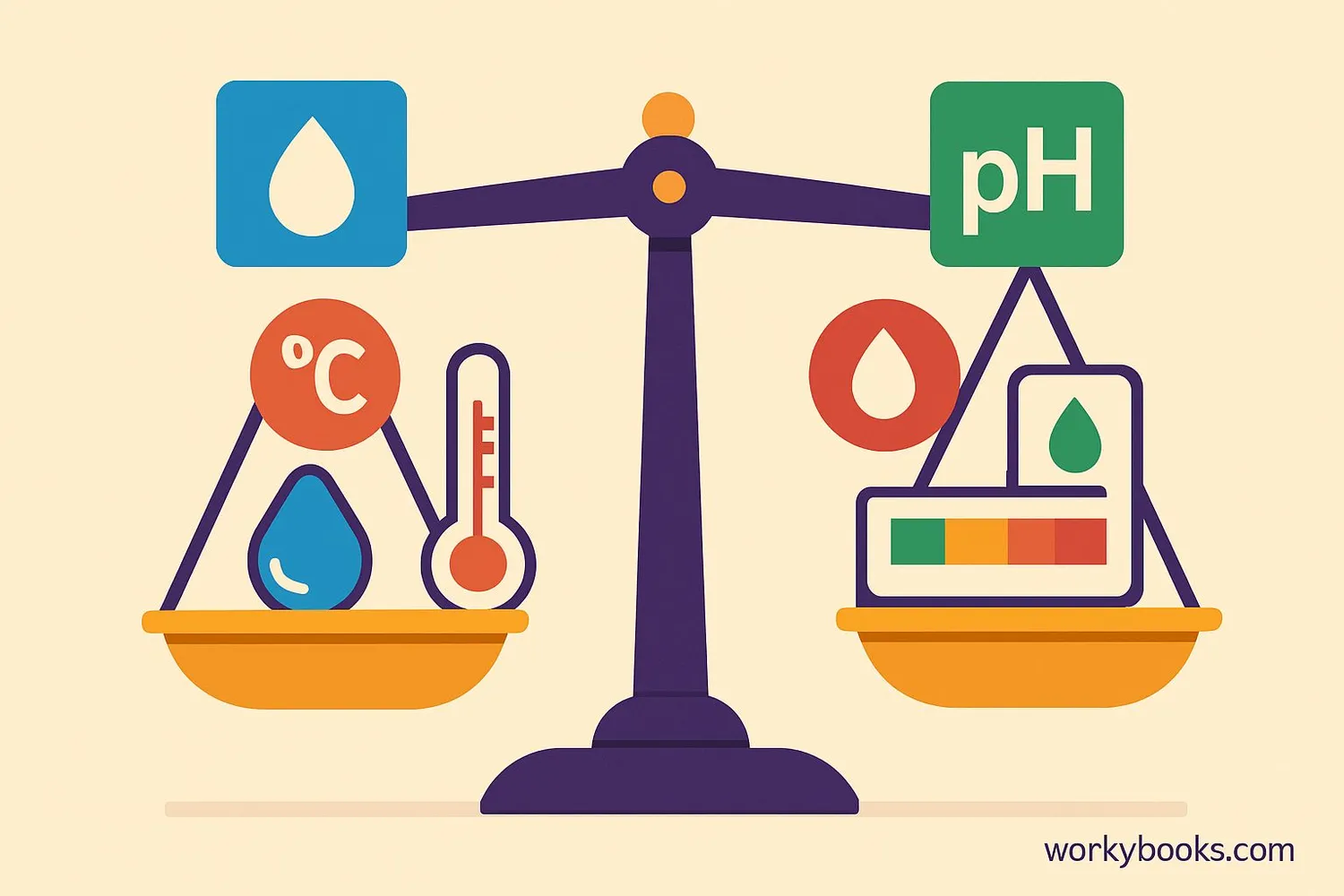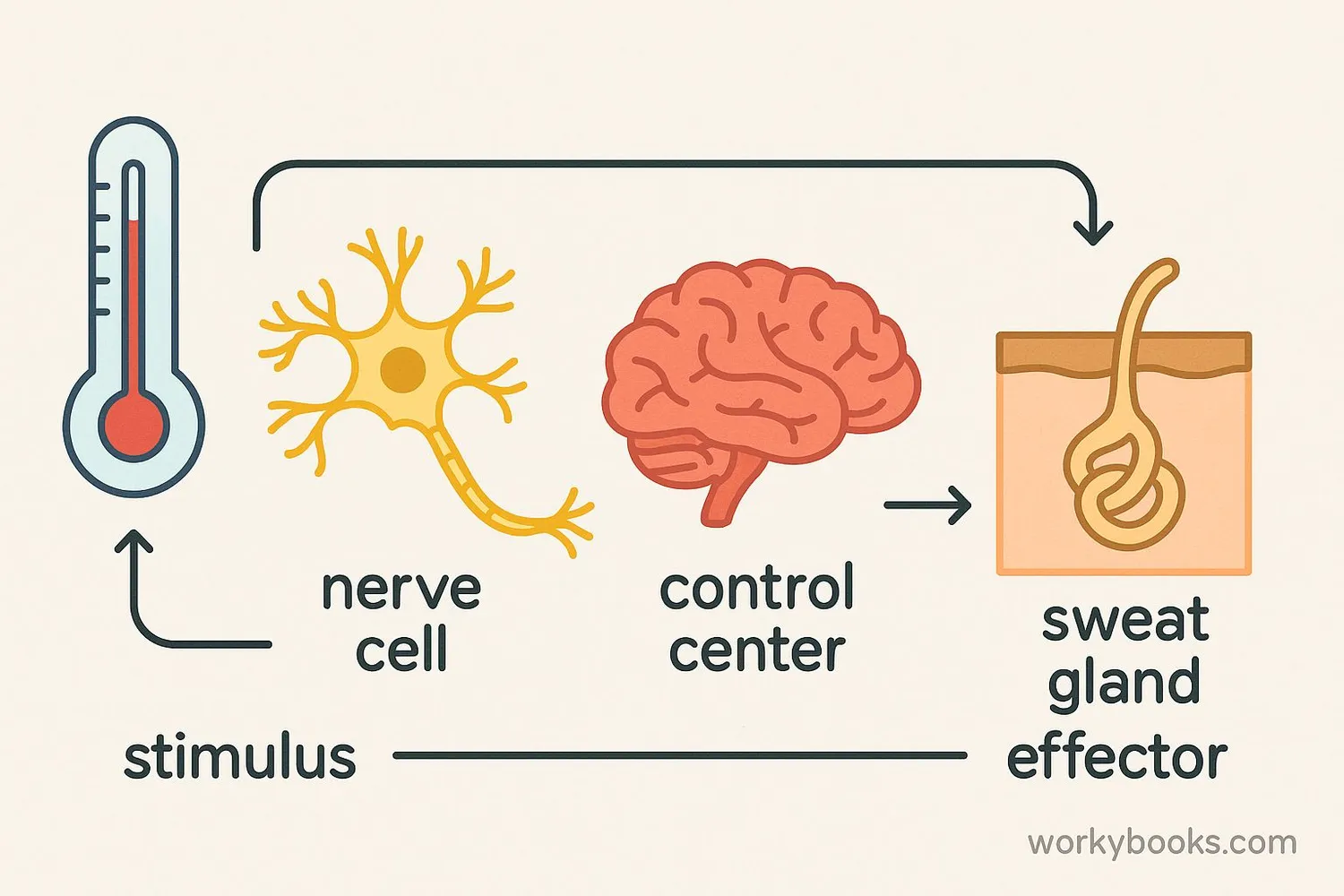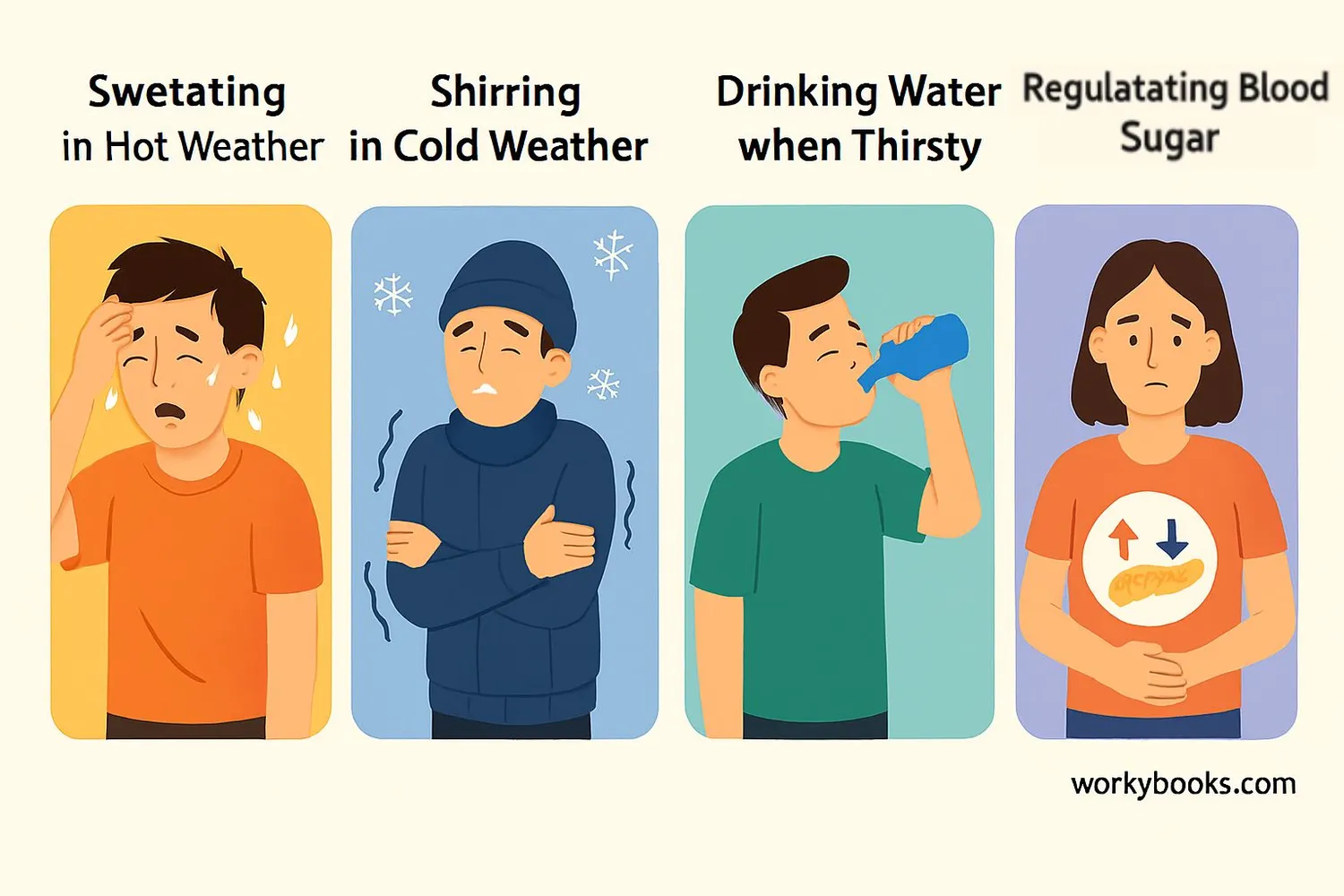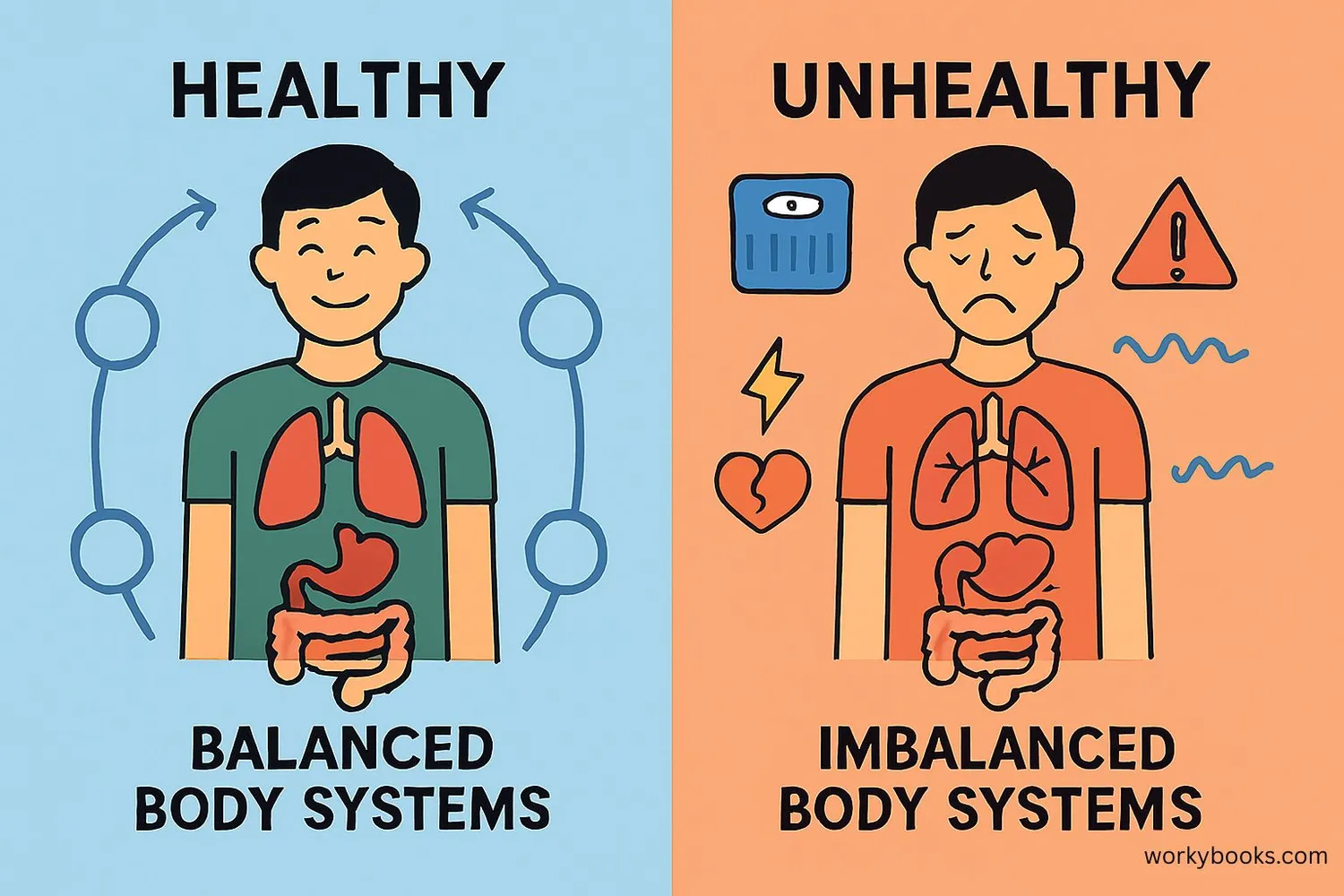Homeostasis - Definition, Examples, Quiz, FAQ, Trivia
Discover how your body maintains perfect balance to keep you healthy!
What is Homeostasis?

Homeostasis is the amazing process your body uses to maintain a stable internal environment - like having a built-in thermostat and balancing system! It comes from Greek words meaning "similar" and "standing still" - describing how your body keeps things steady.
Think of homeostasis as your body's personal team of superheroes constantly working to keep everything balanced. They maintain your body temperature, water balance, blood sugar levels, and many other important functions. Without homeostasis, your body wouldn't function properly!
Balance Fact!
Your body performs millions of homeostasis adjustments every minute without you even noticing!
How Homeostasis Works

Homeostasis works through an amazing system of checks and balances called a feedback loop. Here's how it operates:
Stimulus
A change occurs in the body (like temperature rising)
Receptor
Special sensors detect the change
Control Center
The brain processes information and decides on a response
Effector
Body parts make adjustments to restore balance
Response
Balance is restored and monitored
Most homeostasis uses negative feedback - like a thermostat turning off heat when temperature gets too high. This brings systems back to their normal state. Your body uses these feedback loops constantly to maintain internal equilibrium.
Regulation Superpower!
Your skin has about 640,000 temperature sensors that help with homeostasis!
Homeostasis in Your Body

Your body performs homeostasis constantly! Here are some amazing examples:
Temperature Control
When hot: Sweating cools you down
When cold: Shivering warms you up
Water Balance
Kidneys adjust urine concentration
Brain triggers thirst when needed
Blood Sugar Regulation
Insulin lowers blood sugar
Glucagon raises blood sugar
Other important examples of homeostasis include:
• Breathing rate - adjusts based on oxygen needs
• Blood pressure - maintained by heart and blood vessels
• pH balance - keeps blood at just the right acidity
• Calcium levels - regulated by bones and hormones
Why Homeostasis Matters

Homeostasis is essential for life! Here's why it's so important:
Survival
Keeps body conditions within livable ranges
Optimal Function
Allows cells and organs to work efficiently
Health Maintenance
Prevents diseases caused by imbalances
Without homeostasis:
• Body temperature could swing dangerously
• Blood sugar could become too high or low
• Cells wouldn't get the nutrients they need
• Water balance would be disrupted
Homeostasis allows your body to adapt to different environments - whether you're playing in the snow or running on a hot day!
Homeostasis Quiz
Test your homeostasis knowledge with this fun quiz! Answer all 5 questions to see how much you've learned.
Frequently Asked Questions
Here are answers to some common questions about homeostasis:
Fun Homeostasis Trivia
Discover some amazing facts about your body's balancing act!
Temperature Control
Your body maintains a core temperature of about 98.6°F (37°C). Just a 4°F change can be dangerous, but homeostasis keeps you within 1°F of perfect most of the time!
Water Balance
Your kidneys filter about 45 gallons of blood daily to maintain water homeostasis! They adjust urine concentration based on your hydration needs.
Blood Precision
Your blood pH is maintained at approximately 7.4. Even a small change to 7.0 or 7.8 could be fatal, but homeostasis keeps it perfectly balanced!
Animal Adaptations
Camels can go a week without water because they've developed special homeostasis mechanisms to conserve water and tolerate dehydration!


